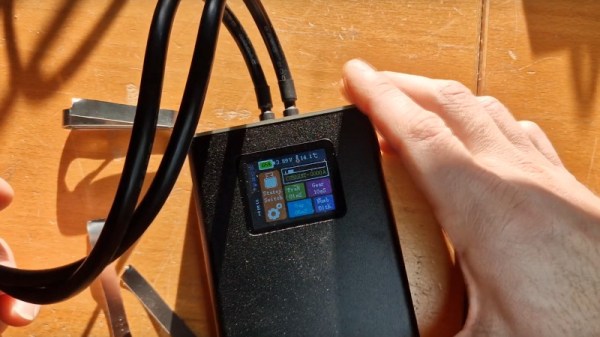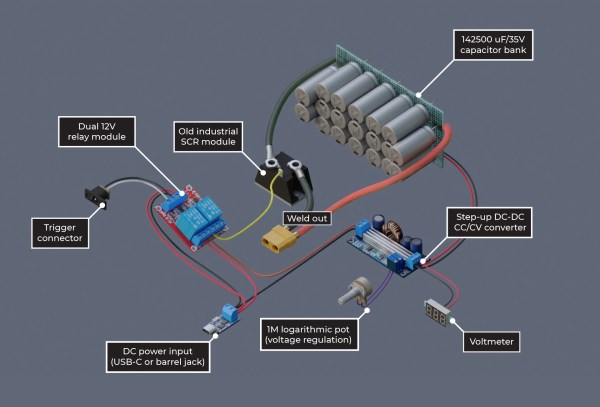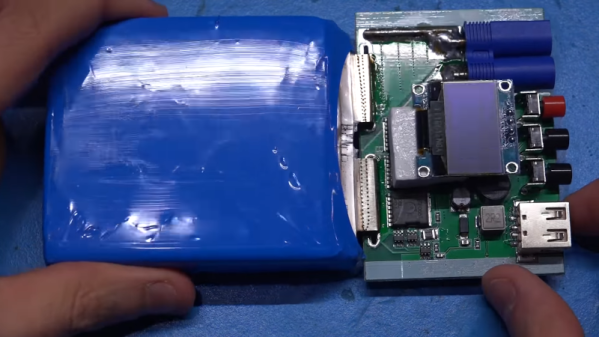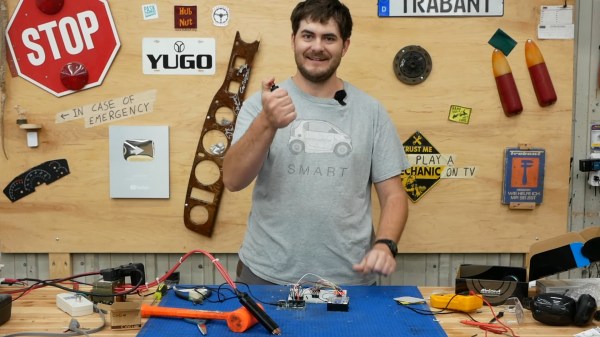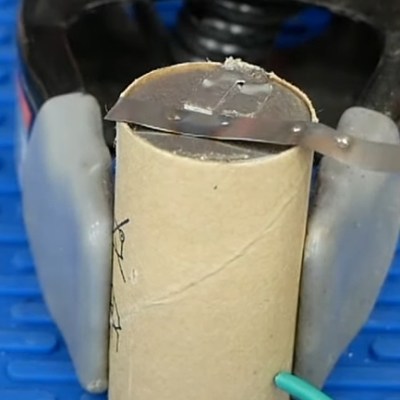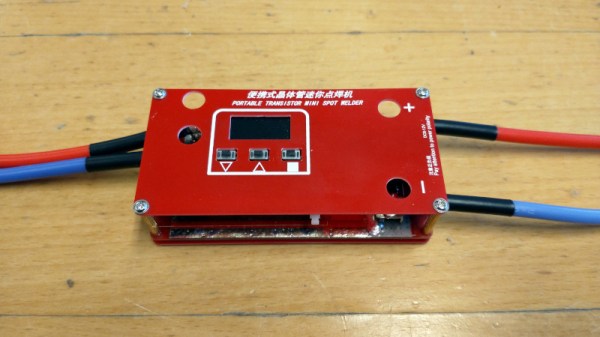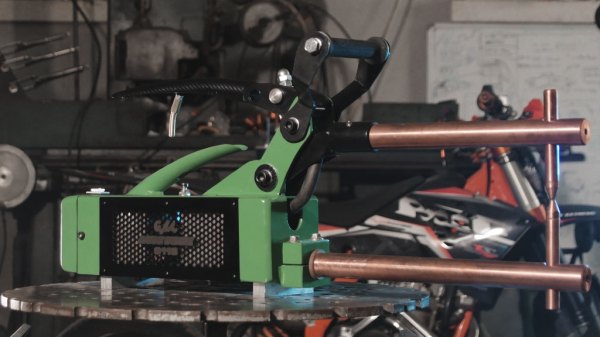There was a time when every gizmo on AliExpress also had a big white LED so it could also work as a flashlight, but maybe the power bank is the new flashlight. [Aaron Christophel] has a battery spot welder that costs a not unreasonable 30 euros and can also be used as a novelty power bank. He subjects it to a test and teardown in the video below the break.
First of all, he conducts a few weld tests, and we have to say it seems capable of some reasonable results if its parameters are correctly adjusted. Then the end comes off the extruded aluminium case, and the guts of the device are slid out for a teardown.
The power comes from a pair of Li-Po pouch cells, while on the board, there’s an STM32 clone providing the timing for a set of MOSFETs that do the heavy lifting. There’s a colour display for tweaking the settings. Alongside all this, there’s also a small chip for that power bank functionality. Charging is via USB-C, though, of course, it’s not really proper USB-C but a USB-C socket that expects 5 volts. This is a disappointing trend in cheap electronics that sullys the promise of USB-C.
It seems this spot welder is capable of doing the job, which is pleasing after our previous disappointing look at battery welders.

